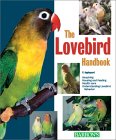Teaching Parrots to Talk
One of the reasons humans love parrots is their ability to talk. We love their vocalizations (well, maybe not the screaming they are sometimes prone to), and we enjoy the feeling of communicating with these intelligent, beautiful creatures.
However, you should never buy a bird only because you expect a talking genius. Frankly, you should assume the bird will NOT learn to talk, because a bird should not be traded in or abandoned just because it doesn’t learn human speech.
Most parrots learn to talk when they are either:
1. Kept alone with humans
2. Kept with other parrots who talk
3. Are members of a species with a facility for talking
The best talkers are those tiny budgies – parakeets still hold the record for vocabulary. I have never met a male budgie kept singly that has not learned words. However, budgies kept in pairs and female budgies generally do not learn to talk (there are always exceptions).
Parrots are vocal by nature. Talking is just another way of communicating with you. If they can communicate fine without words, why bother? For this reason, teaching talking is really about associating pleasant and positive events with words. Arbitrarily trying to teach your bird words you think are cool is not very easy – and in most cases doesn’t work.
African Greys are considered one of the best talkers – mainly because they have the uncanny ability to speak in voices that sound very human. Most other parrots have “parroty voices” that are clearly NOT human. People have been tricked by an African grey on many an occasion by the accuracy of their mimicry.
So talking is about communicating. How would you teach a parrot to talk then? Think about how a child learns to talk – they hear you say things IN RELATION TO WHAT YOU ARE DOING.
When you come in the room you say, “Hello.”
When you give them food you say, “Yummy cereal!”
When you change their diaper you say, “Oh oh! Messy poops!” (grin).
The child learns words because she sees that they relate TO SOMETHING HAPPENING in the world.
They also relate to emotions – if you hug your child and say “I Love You,” the child understands these words confer the meaning that is associated with a hug.
The best way to teach your bird to talk is to use the SAME WORDS with the SAME ACTIVITIES – association – pure and simple.
Why do you think birds tend to learn their names first? Because that word is associated with the pleasant fact that their human companion has come home or come over to pay attention to them.
My Amazon parrot learned MY name because my neighbor would come back and call “Vera? Vera?” until I would come out to greet her. Inca has a tree on my covered patio – so when she was out there, she quickly associated the word “Vera” with me coming out to where she was.
She now uses “Vera” to call any person she likes or wants to see – to her, Vera is the thing you say to bring a favorite person into your line of sight.
Inca also says, “”Up Up” when she wants to come out of her cage. Every time I picked her up, from babyhood on, I said, “Up Up” as the verbal command. She now knows that word means “I get to be with a person!”
She really likes the “Up Up” words and even uses it as a sort of mantra when she is in a good mood and going through her vocalizations. You can listen to her repetitive use of this phrase by clicking here.
Anytime you bring food, clean the cage, walk in the room, turn on the TV, walk out the door…associate a phrase with the activity. This is the best way to get your parrot communicating with you with human words!
I highly recommend these parrot training videos if you want to see some great training techniques in action.









